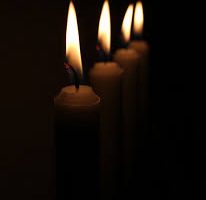Celebrated by Catholic monasteries throughout the world and at many parishes, Tenebrae, which means “darkness” in Latin, focuses our attention on the sufferings and death of Our Saviour. It takes place during the three days preceding Easter Day—Holy Thursday, Good Friday and Holy Saturday—with special psalms and ceremonies during Matins and Lauds (the first two hours of the Divine Office), and usually taking place in darkness.
The structure of Tenebrae has changed over the years, and may be characterized by gradual extinguishing of candles, and by a “strepitus” or “loud noise” taking place in total darkness near the end of the service.
The beautiful traditions regarding this service in the Roman Catholic Church go back at least to the ninth century.
Here are some online resources should you wish to participate at some level online or learn more:
RELATED RESOURCES:
- St. Albert’s Western Dominican Piory – Livestream – OPWest – https://livestream.com/opwest (Please note: You will find past “events” below the future listed events)
- What is Tenebrae? by Kimberly Walters of Mater Dei parish in Irving, TX, that references commentary by Fr. Leonard Goffine – excellent article!



You must be logged in to post a comment.